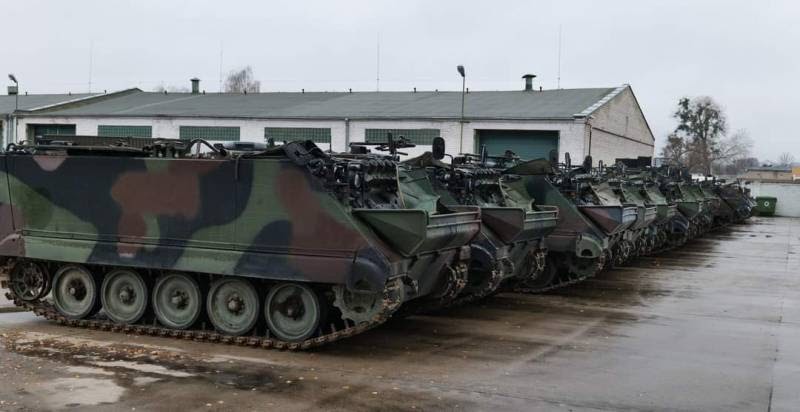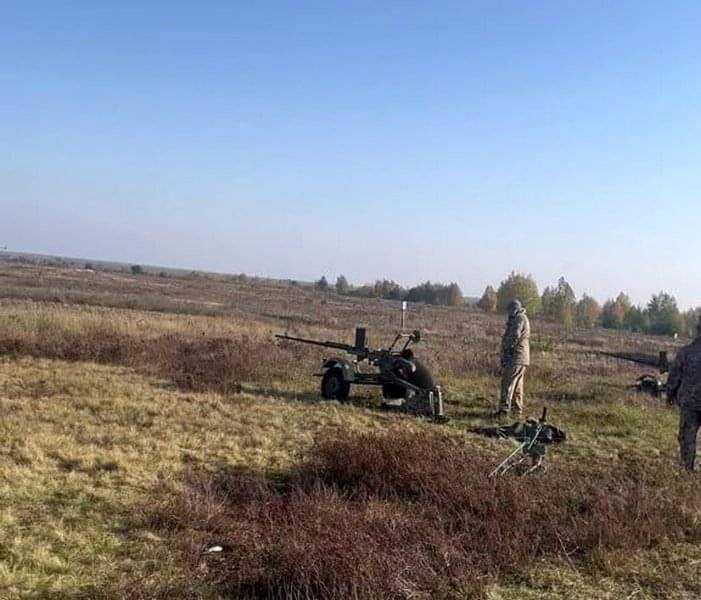Update Nov 13th-15th
Kherson-Nikolaev-Odessa.
Ukrainian forces at the Novaya Kahovka sign, right side of the Dnepr.
Фото ВСУшника у стелы "Новая Каховка", сделанное в Казацком на правом берегу (46.785999, 33.354848). По моим данным, ни один населённый пункт на Левом берегу ВСУ в Херсонской области не контролирует. Пока не контролирует...

t.me
Ukraine's 35th MarBde riding Kipri MRAPs in Kherson region.
Бронеавтомобили Kirpi турецкого производства на вооружении 35-й ОБрМП ВСУ. Предположительно, Херсонская область. Источник: @milinfolive

t.me
Russian forces leaving Kherson area.
Русские бойцы одного из подразделений специального назначения покидают правый берег Херсонщины, но обещают вернуться @grey_zone

t.me
Ukrainian in Kherson throwing a Zieg Heil on western television. Reportedly Ukraine kicked out 6 western reporters from Kherson after this aired.
Невозможно подключиться к серверу. Проверьте соединение и повторите попытку.

t.me
Репортаж британского телеканала из оккупированного нацистами Херсона. Фашист с желто-голубым флагом выбрасывает руку в нацистском приветствии. Ничего нового... @razved_dozor

t.me
More footage from Zelenskiy visiting Kherson.

vk.com
Zaporozhye-Dnepropetrovsk.
Russian EW unit with anti-UAV weapons and a Borisoglebsk complex, Zaporozhye region.

vk.com

vk.com
Oskol Front.
Allegedly Ukrainian tank getting taken near Novoselkovo, Svatovo area.

vk.com
Еще 2 уничтоженных танка ВСУ. 1. Подрыв на мине в поселке Новоселовское. https://t.me/razved_dozor 2. Попадание в танк противника на южном направлении. https://t.me/rusich_army

t.me
Russian helo strikes near Svatovo, allegedly against a Krab and a BTR-4.
‼️ "Аллигаторы" и "Ночные охотники" уничтожают технику НАТО на Сватовском фронте Армейская авиация ЗВО каждый день уничтожает боевую технику врага, на этих кадрах поражение польской САУ "Краб" и БТР-4. t.me/RVvoenkor

t.me
Russian super-heavy artillery operating in Kharkov region.

vk.com
LDNR Front.
Some combat footage from Wagner around Artemovsk/Bakhmut. The fighting there remains primarily positional, with artillery typically playing first fiddle.
Кадры с участием «Группы Вагнера из под Бахмута, где его бойцы за предыдущие сутки уничтожили из РПГ-7 танк Т-72 ВСУ, двойным выстрелом из ПТРК уничтожили бронированную боевую машину, из управляемого артиллерийского 152-мм снаряда «Краснополь» ещё несколько ББМ и БМП с личным составом...

t.me
Near Artemovsk/Bakhmut a Ukrainian BMP takes an ATGM hit, doesn't get destroyed, dismounts return to the vehicle, after which a second missile hits it, and it goes up in flames. Allegedly Wagner fighters firing.

vk.com
Ukrainian military cars getting hit by artillery, allegedly Wagner near Artemovsk/Bakhmut.

vk.com
Rebel forces in Zaytsevo, outskirts of Gorlovka. The town was contested for years, since the '14 war. Rebel forces now control all of it, namely the DNR 3rd Bde. Despite the years of war, a few residents still remain.

vk.com
DNR 3rd Bde in Mayorsk.
Подтверждающее видео из взятого на днях Майорска. Взяла 3-я омсбр. Противник отполз в направлении Дзержинска. Источник: https://t.me/wargonzo

t.me
Russian Marines, 155th MarBde, Pavlovka.
Морпехи 155-й бригады https://t.me/voin_dv морской пехоты. Перед штурмом и после штурма Павловки.

t.me
Allegedly Russian and DNR forces taking a Ukrainian POW in Pavlovka. To me the scene looks staged. It's entirely plausible that this is a POW taken in Pavlovka, but to me this looks like a show for the cameras.

vk.com
Civilians in Mariupol' are writing graffiti on the walls to indicate they are freezing. As temperatures drop, most of the city is still in ruins. The fancy new housing complex notwithstanding, I suspect almost all of the remaining residents are living in the pre-war buildings.
Надписи на домах и у подъездов Мариуполя - крики жителей о помощи. Крики, которые "не слышат" Z-каналы с сотнями тысяч и миллионами подписчиков, предпочитающие обсуждать, как "замерзают хохлы"...

t.me
DNR 1st Bde using a captured T-64BM Bulat.
Танкисты 1-й Славянской бьют врага из трофейного "Булата" Танкисты 1-й Славянской бригады бьют по району сосредоточения сил противника в лесополосе находящейся за н.п. Опытное, которое недавно было зачищено от украинских националистов. Работа ведётся с закрытых позиций с применением...

t.me

vk.com
The West.
Several Rosomak-based armored vehicles moving around in L'vov.
По Львову курсируют колонны натовской военной техники На видео замечены словацкая САУ «Зузана», польский БТР «Росомаха», самоходный миномет М120G «Рак» и мединицнский модуль на базе ББМ «Росомаха-ВЕМ» (медицинский вариант, способный перевозить 7 человек). Осташко! Важное - подпишись

t.me
Russia.
Russia has reportedly captured a team of Ukrainian infiltrators in Belgorod region.

vk.com
Mobilized personnel training. All the problems notwithstanding, Russia has managed to mobilized hundreds of thousands, equip them, arm them, and they are now arriving at the front.
Ну и немного позитива по ситуации с мобиками. Тот же самый район, где возникла конфликтная ситуация. Ровно такие же самые мобики. Но атмосфера совсем иная, а именно- рабочая и позитивная. Так и только так победим. От себя добавлю, что командир этой группы мой хороший товарищ, с которым мы...

t.me
Old MAZ fuel trucks pulled from storage, in Moscow.
В Москве заметили расконсервированные топливозаправщики МАЗ-5334 1980-х годов выпуска. С броском к Ла-Маншу как-то не задалось, но шансы взять Авдеевку ещё есть.

t.me
Misc.
Two cases of Ukrainian tanks hitting land mines. I think this illustrates the realities of this war. While more modern tanks are nice, many of the ways tanks are lost don't depend very much on what the tank is.
Еще 2 уничтоженных танка ВСУ. 1. Подрыв на мине в поселке Новоселовское. https://t.me/razved_dozor 2. Попадание в танк противника на южном направлении. https://t.me/rusich_army

t.me
Russian UAV-directed mortar fires in Ukraine. According to them they show up, set up, fire, and withdraw, using UAVs and counter-battery radars.

vk.com
A destroyed Zuzana-2 in Ukraine. Only a handful of these have been supplied, and one has been destroyed.
Видео перевозки сгоревшей 152-мм самоходной гаубицы Dana M2 ВСУ - похоже, что это была полученная от Словакии новейшая 155-мм/52 Zuzana 2 (с) t.me/Ugolok_Sitha

t.me

vk.com
Allegedly fragments of a Lancet loitering munition that was shot down. Of course it's also quite possible that these are fragments picked up after a successful impact.

vk.com
NATO/EU.
Excalibur Arms is apparently planning to produce technicals carrying the ZPU-2 for air defense against the Shahed strikes.
ЗСУ, как же - как же.. Теленрам - канал Панцерваффли

shusharmor.livejournal.com
Howitzers heading from Slovakia to Ukraine. Type of gun unknown.
Босяцкий подгон Украине от Словакии.

t.me
Lithuania has transferred a party of 10 SP mortars and 2 fire control vehicles to Ukraine.

gurkhan.blogspot.com

vk.com
Yugoslav M75 20mm AA guns have shown up in Ukraine. While not the most useful weapons, it's far from the worst system provided to Ukraine.
Установки M75 где-то на Украине. Фото Telegram / BMPD Зарубежные страны активно передают Украине различные вооружения и технику, но в подавляющем большинстве случаев это давно устаревшие образцы, в т.ч. снятые с вооружения. Об очередном примере такой «помощи» стало известно несколько дней назад.

topwar.ru
























